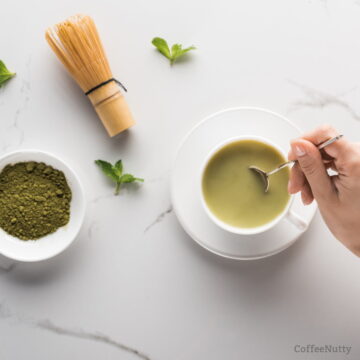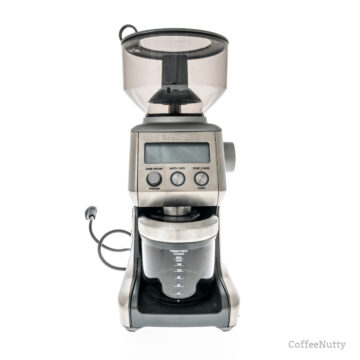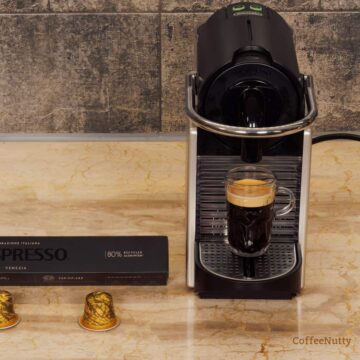There is nothing like a hot cup of coffee to get the day started. But if the first sip ends with a wad full of granules in your throat, it’s a recipe for a morning disaster. One can easily assume that instant coffee is immune to these misfortunes, but that’s not entirely true. Instant coffee can have difficulties when dissolving, and coffee drinkers need to know how to fix it.
Instant coffee may not dissolve correctly if it is old or damp or if its container is disrupted too many times. Another reason instant coffee doesn’t dissolve lies in how it is prepared. It’s best to start with cold water and vigorous stirring. If the problem insists, using a blender is an excellent way to dissolve the coffee fully.
Putting an end to disastrous morning brew mishaps is a must. Learn why your instant coffee might not be dissolving correctly and how to fix it.
Why is My Instant Coffee Not Dissolving?
It’s assumed that there will be no worry of large leftover granules with instant coffee. The instant design is assumed to dissolve immediately in water, leaving a coffee lover with a smooth, delicious brew. But that is not always the case. Instant coffee can be tricky, and it’s important to know why and how to fix it.
Are You Using the “Right” Coffee?
Although they may appear the same, ground coffee is different from instant coffee. Only instant coffee will dissolve fully when it comes in contact with water. Ground coffee beans are only part soluble and will not be able to dissolve in water. When trying to dissolve ground coffee beans, at least 70% of the granules will be left at the bottom of the mug.
The first thing to do is to double-check that the right type of coffee was purchased.

Reasons Why Your Instant Coffee Isn’t Brewing
If it’s not an issue of purchasing the wrong type of coffee, there are some other reasons that your instant coffee isn’t fully dissolving.
Consider these helpful tips for future instant brewing:
Mix Using Cold Water
Mixing instant coffee directly with hot water may be the reason why it is not dissolving. Instant coffee granules contain amylum. This substance hardens when it makes contact with hot water, making it harder to stir and dissolve. That is why it’s highly recommended to mix using cold water first.
There are two major benefits from mixing with cold water: the instant coffee has an easier time dissolving, and the cold water enhances the flavor. These reasons alone are enough for any coffee-lover to want to use cold water for their instant coffee. But it needs to be done correctly.
Here’s how to mix your instant coffee with cold water:
- Mix only a teaspoon of cold water. Unless going the iced coffee route, start by mixing only a teaspoon of cold water with a teaspoon of instant coffee.
- Stir vigorously until all instant coffee is dissolved. It is important to stir enough to ensure all granules are dissolved before moving onto the next step. Otherwise, leftover granules might end up at the bottom of the cup.
- Pour the mixture over hot water. How much hot water is needed depends on the coffee drinker. Some prefer a stronger flavor, so they won’t need more than a cup of hot water. Others may prefer a lighter flavor, so more hot water is needed.
- Stir some more. When it comes to instant coffee, stirring is essential. Be a bit more gentle during this step to avoid burns as there is hot water in the mug.
Stir Faster and Longer
Sometimes it is a stirring issue. Although instant coffee should typically dissolve in a few short minutes, that isn’t always the case. Some instant coffee requires more stirring. This is especially true if the coffee is subject to clumping. The simple solution is to stir the instant coffee more quickly and for a longer time. It can take up to 15 minutes.

Consider Using a Blender
Vigorous stirring can be straining for some individuals, such as those who have arthritis. Others may be dealing with instant coffee that has become clumpy and unruly. Whatever the reasoning may be, if stirring has become an issue, coffee lovers might consider using a blender.
Using a blender opens up more coffee opportunities. For example, using a blender, one can make a tasty blended iced mocha beverage. The instant coffee will be made as usual, although there is no major concern for complete dissolution. Let the coffee cool, then add chocolate milk, ice cubes, and simple syrup to the blender. Blend and top with whipped cream and chocolate sauce.
One can make plenty of recipes using instant coffee in a blender. It can also be used alone. Simply pour the instant coffee and the hot water into the blender. Blend for a few seconds, and enjoy a granule-free cup of Joe.
Look for Clumping
There are a few reasons why instant coffee might start to clump:
- The instant coffee is old.
- The instant coffee has become damp.
- It has been disrupted too many times.
Disruption can occur from too many people scooping into the jar, especially if the spoon used was damp or wet. Over time, this can cause instant coffee to clump. It makes it far more challenging to dissolve when clumping occurs.
Check the expiration date of the instant coffee as it will begin clumping after this date. If old age is the cause of clumping, it is time to purchase new instant coffee. Make sure that the jar or other container is thoroughly cleaned and dried before adding new coffee. Otherwise, the new coffee may be susceptible to clumping right away.
How to Tell When Instant Coffee Has Gone Bad
Clumping is a clear sign that instant coffee may have gone bad. That is not the only sign, though. It’s vital to known when your instant coffee has gone bad because old instant coffee should be discarded immediately.
Other signs that your instant coffee has gone bad include:
- Loss of flavor
- Stale taste
- Odd odor
- Change in appearance
- Presence of mold
How to Extend the Life of Your Instant Coffee
Instant coffee packs will have a “Best Before” or “Best By” date, but this is not entirely accurate. The biggest factor to consider when trying to extend the life of your instant coffee is how it is store.
Instant coffee can typically last between 12 and 18 months at room temperature. To extend its shelf-life, instant coffee should be placed in a cool and dry area. Always make sure that the container or jar is tightly sealed. Instant coffee can be tainted by air and humidity, which can harm the overall shelf life without a proper seal.
Additionally, instant coffee can be frozen indefinitely. While this extends the shelf life, it puts a damper on the flavor. Frozen instant coffee can end up becoming almost flavorless. However, this may not be an issue for some coffee lovers who prefer to add sugar, spices, and other mix-ins to their coffee.
Final Thoughts
Most instant coffees should have no issues dissolving. However, some issues such as clumping, lack of proper preparation, and not enough stirring can cause a halt to the dissolution process. Simple solutions include mixing with cold water, stirring for faster and longer periods, and getting rid of clumped, damaged granules.
RELATED:




